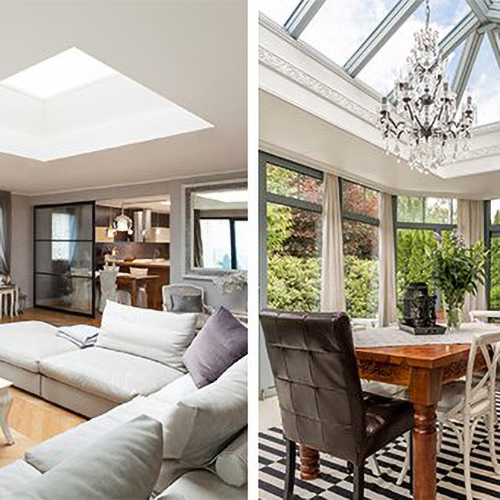
Rooflights and roof lanterns serve largely the same function: allowing light into your home. However, there are differences, mostly when it comes to appearance.
Both rooflights and roof lanterns have grown in popularity over the last few years as a more cost-effective alternative to a conservatory or glass room. Just like with any home improvement, its important to consider how the final product will look in its surroundings. Our experts break down the differences between rooflights and roof lanterns to help you make the best choice for your home.
Rooflights
Rooflights consist of a single pane of glass fitted to a flat roof. Due to their placement, they allow in around three times more natural light than a regular vertical window. For this reason, rooflights are a very popular choice for loft and barn conversions, where regular windows may not be practical.
We are leading manufacturers of energy-efficient, modern rooflights, available for order online and delivered straight to your door. Our rooflights are made using thick, self-cleaning glass and are available from just £250, complete with installation guide.
Roof lanterns
The design of the modern roof lantern dates back to the 16th Century when it was used in France and Italy during the design of orangeries and conservatories. Unlike rooflights, roof lanterns are made up of several panes of glass to form a domed or triangular prism shape.
As they are larger, roof lanterns are more of a statement piece than flat rooflights, with the impact evident both outside as well as inside your property. Due to their ties to traditional architecture, roof lanterns make a great addition to Victorian or otherwise traditionally themed homes, for example, in a kitchen or living room.
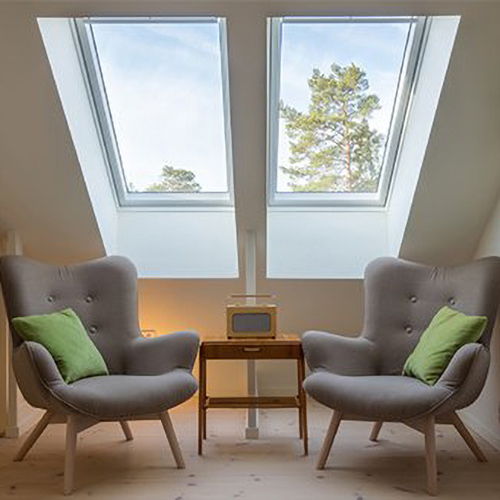
The benefits of natural light for our overall health and wellbeing are well documented. Here are 3 reasons you should introduce more natural light into your home.
Improve mood
Most people feel happier during longer, warmer summer days and there’s a scientific reason for it. Studies have shown that exposure to sunlight increases the brain’s production of serotonin, a mood-enhancing chemical.
Many of us would admit to spending most of our time indoors, if not at work, then at home. However, this means that more of a concentrated effort needs to be made during office or home design in order to ensure plenty of access to natural light.
Be more energy efficient
Making the most of the sun’s natural light is absolutely free! If areas of your home are not illuminated by natural light, then you’re probably using a lot more energy than you could be. Investing in new windows or a rooflight can help you significantly reduce your energy use and make for a greener, more cost-effective option.
Boost vitamin D intake
Exposure to natural sunlight is our body’s number one source of vitamin D, which has huge health benefits – it helps maintain healthy bones and teeth, supports the immune and nervous system and regulates insulin levels.
However, studies have found that 1 in 5 people in the UK are estimated to not be getting enough vitamin D. Symptoms of vitamin D deficiency include:
- Frequent sickness
- Fatigue
- Aches
- Back pain
- Muscle pain
Therefore, making sure that even indoors you are getting the recommended 8.5 to 10 micrograms of Vitamin D into your body per day is essential for your good health.
How can I introduce more natural light into my home?
In terms of natural light, besides going outdoors, a rooflight or skylight is the best possible choice. Due its position, a rooflight allows in up to three times more natural light than a vertical window of the same area, making them your number one choice when it comes to improving natural lighting in your home – they also have the added benefit of making a room look and feel bigger!
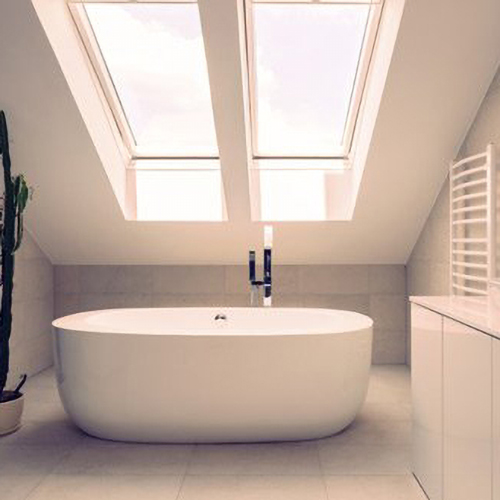
A loft conversion can help you maximise your available space, provide a new view and more, as our rooflight specialists explain with these 4 design suggestions.
You can improve your home’s value by 30% with a loft conversion, but with any renovation project comes challenges. There are plenty of ways that expanding upstairs can improve your property, so read on for some of our best ideas for a loft conversion.
Use transparent materials
Attics and lofts can be a bit dark and challenging to light, but investing in rooflights will introduce natural light and widen the space. Given that a roof sees a lot of sunlight, this is a logical step to take; just a single loft window can help to transform your loft into an airier, brighter and altogether more pleasant room.
Use all the space on offer
Roofs often have sloped sides, making them potentially awkward to convert. It’s important to use all of the space that you have in a loft conversion: using slanted ceilings for positioning baths under or using tight spaces for storage can help you to make use of the whole of the room.
Frame a view
Windows aren’t just good for the light they let in, but the views. A loft conversion will potentially give you the best view in the house, so choose carefully where you’d like the windows to be. Placing your window on a side with a great view could potentially increase the value of the property.
Think outside the box
Loft conversions don’t have to just be used as spare bedrooms. Whether you need a home office, a dining area or a games room, an extra room in the loft can give you plenty more space to enjoy your home.
Custom Rooflights are one of the leading suppliers and manufacturers of skylights and rooflights in the UK. Our experts can help with any enquiry you may have for your residential or commercial roofing project, contact us on 01202 802111.
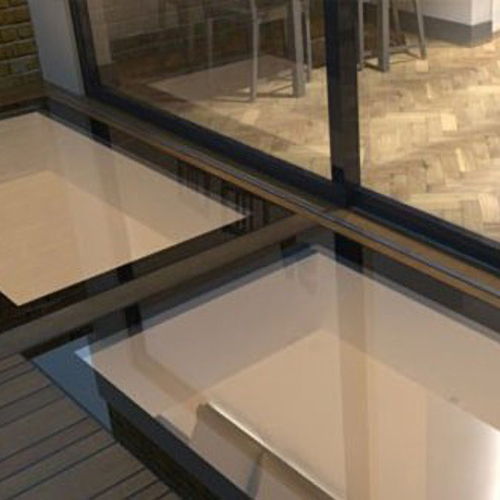
A new skylight can make a great aesthetic addition to a room, however, there are several things you should know before installing one.
Skylights allow in up to 30% more light than a regular window due to their placement on your roof, which can save you money on your energy bills. However, it’s natural to be concerned about the installation process – you will be cutting a hole in your roof after all! We run down 3 important things you need to know before installing a new skylight.
Building regulations and planning permission
Usually, you will not need to seek planning permission for a new skylight for your home, however, it’s important to check that the skylight fits under permitted Building Regulations. This is important because a skylight that is too heavy for your ceiling could be a major health and safety hazard. We go into further detail regarding necessary planning permission for skylights here.
Fixed skylight or vented
As the names suggest, a fixed skylight does not give you the option to open and close it, whilst a vented skylight does. When choosing between the two there are a number of factors to consider, including your budget and requirements.
Fixed skylights are completely sealed, which means leaks are extremely uncommon, whilst vented skylights can present more of an issue in this area; however, vented skylights give you more control over ventilation and heat. This feature comes with a cost, as vented skylights are usually more expensive than their fixed counterparts.
If you have a lower budget and it is not a practical requirement to open and close your roof windows, then a fixed skylight is probably the better option for you.
Which installation contractor you will use
As long as you choose the right skylight installation company, you shouldn’t need to worry too much about the technicalities, as they should be able to advise you further. Look for an installation company with years of experience and positive reviews from clients to back it up – you should then be safe when it comes to the installation side of things.
We have a huge range of skylights and rooflights available to suit all requirements. Browse our rooflights today!
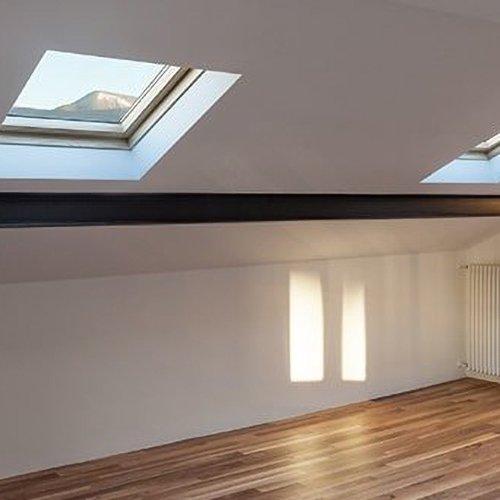
So, you’ve decided to buy a rooflight for your home, but are unsure what size to go for. Follow this handy guide for our top advice on choosing the right fit.
Rooflights come in a range of sizes; for example, we can supply you with rooflights ranging from 600mmx600mm all the way to 1500mmx1500mm and everything in between. So how can you sure you’ve chosen the right rooflight size for your DIY project?
Where will your rooflight be positioned?
The first thing you’ll no doubt think about is where your new rooflight will be positioned in your property. Kitchens, loft conversions and living rooms are all popular choices for rooflight and skylight installations, however, you should consider the greenhouse effect you could cause with a larger rooflight in certain areas.
For example, apart from your bathroom, your kitchen probably generates the most heat out of anywhere in your home. A larger rooflight can allow in up to 40% more light, and therefore heat, than a normal window of the same size. This could make your kitchen extremely toasty during the summer months, especially in the case of non-opening rooflights that don’t offer the option of ventilation.
When to avoid going too small
Whilst going too big can be a potential issue, choosing a rooflight that is too small is also a problem that clients often make. In many cases, you’ll be investing in a new rooflight to make a statement, and a rooflight that’s too small can lack the visual impact you’re after and won’t provide you with enough light for a larger room.
However, when considering a larger rooflight for an extension or conversion, it’s important to research if you’re covered under Building Regulations to carry out the installation. This is because larger rooflights could contain an amount of glass that is considered too heavy for your roof and cause a health and safety hazard.
We have a huge range of rooflight sizing options available to suit all requirements. Browse our rooflights today!
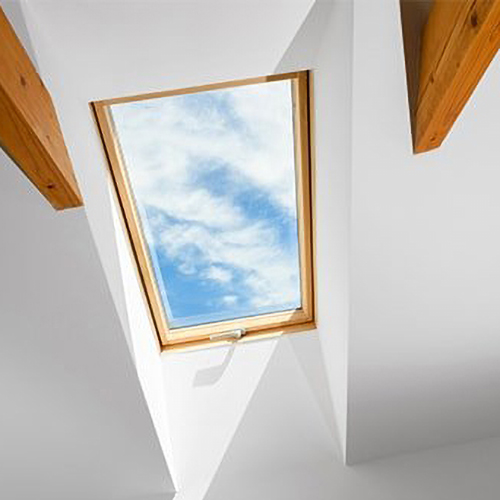
Rooflights are no more or less secure than any other window in your home, however, investing in triple glazed rooflights will offer you the best security overall.
We use high-quality triple glazing for all rooflights that we manufacture and supply, to ensure that you and your property are as safe as possible. You can browse our range of secure rooflights here.
Non-opening rooflights
Most thieves will look for open windows and doors in order to make their entrance as low profile as possible. Weak window and door locks are also a potential target.
Our rooflights are non-opening, which means that someone would need to break through the tough triple-glazed glass in order to enter your property. As you can imagine, due to their location on the roof of your property, this presents much more of a challenge for potential burglars than a window on the first floor that they can easily access.
There’s also the fact that rooflights don’t present the easiest escape route; on the rare chance someone did break in, the burglar likely won’t be getting out again without a ladder!
Triple glazed glass
It stands to reason that three panes of glass will be tougher to break through than one or two. As our rooflights don’t open, a potential thief would need to break through completely in order to enter your property and that would require a lot of force and cause a lot of noise – the opposite of what opportunists want.
We ensure our rooflights are built to be as secure as possible for our residential and commercial clients. Browse our range today!

You’ve probably noticed that we use the term ‘self-cleaning glass’ a lot when talking about our range of rooflights – but what does self-cleaning glass mean and how does it work?
What is self-cleaning glass?
Self-cleaning windows have their glass panes treated with a thin coating of the non-toxic chemical titanium oxide, which gives them their ‘self-cleaning’ properties. Titanium oxide is a naturally occurring mineral that is used as a flavouring and preservative in several foods, as well as used to whiten paint and in some sun creams as an effective UV barrier.
How self-cleaning glass works
The first thing to understand about self-cleaning glass is that it doesn’t literally clean itself; instead, it works through a two-stage process: photocatalytic (light-activated) and hydrophilic (water-effected). We’ll get into these in further detail below.
Photocatalytic (light-activated)
Stage one of the self-cleaning process involves the photocatalytic stage. During this stage, UV light from the sun comes into contact with the titanium oxide coating, causing a chemical reaction that effectively breaks down any dirt particles on the surface of the glass. This in turn makes the dirt particles much easier to wash away.
Hydrophilic (water-effected)
The second stage is the hydrophilic stage. Rather than forming droplets like it would on untreated glass, rainwater spreads across the surface of self-cleaning glass like a sheet. This means that dirt particles, which have already been loosened during stage one, are much more easily captured and washed off the glass. The result? You effectively have a rooflight that keeps itself free from mould and dirt!
If you have any further enquiries regarding our self-cleaning rooflights, don’t hesitate to get in touch today on 01202 802111 – Browse our rooflights today!
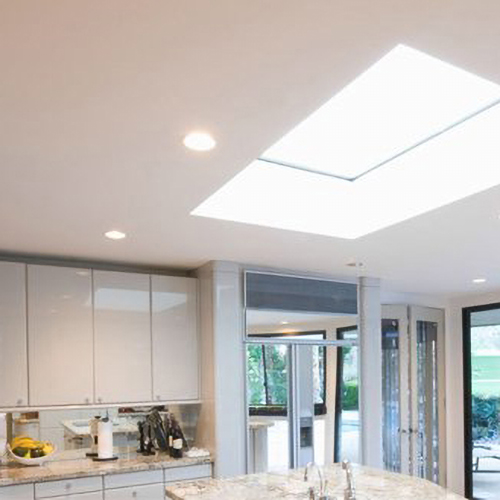
The addition of a new rooflight to your kitchen is the perfect way of making it appear larger and brighter – it can even boost your home’s value and improve your mood!
In light of current high property prices, an increasing number of people are choosing not to move and instead stay and improve their home. In fact, according to a survey by John Lewis Finance, most people questioned (22%) said that they were planning work for a new kitchen.
Maximise your kitchen space with a new rooflight
If you are planning a kitchen renovation or extension, it’s well worth considering a new rooflight. Combining light wall and ceiling colours with more natural light is a tried and tested method for making a room appear larger. As a rooflight provides up to three times more natural light than a vertical window, it’s an excellent investment, and when placed strategically can create a stunning centrepiece to your kitchen.
Inviting daylight into your home helps improve your mood
Sunlight is linked to the release of serotonin in the brain, which helps improve our mood and prevent depression. A kitchen is a place where a lot of us spend quite a bit of our time, so ensuring that you have access to ample daylight is important.
If you feel that your kitchen is dark and dismal, installing a rooflight is an excellent choice if you have a busy kitchen and don’t want to sacrifice wall space for a window. The location of your rooflight above you also means that you receive maximum exposure to sunlight.
Our rooflights offer excellent thermal efficiency
According to a recent survey conducted by the Guardian, 86% of Britons are interested in improving the energy efficiency of their home. Good thermal efficiency is also listed among the top priorities for potential property buyers today.
Our triple glazed rooflights come with a U-value of just 0.83W/m, which makes them on average 40% more energy efficient than required by Building Regulations. When purchasing one of our rooflights for your kitchen, you can, therefore, rest assured that you are getting the most efficient solution – beneficial not only for the environment but for potentially reducing your energy bills too!
Don’t miss out on the opportunity to make the most of your kitchen space – Browse our rooflights today!
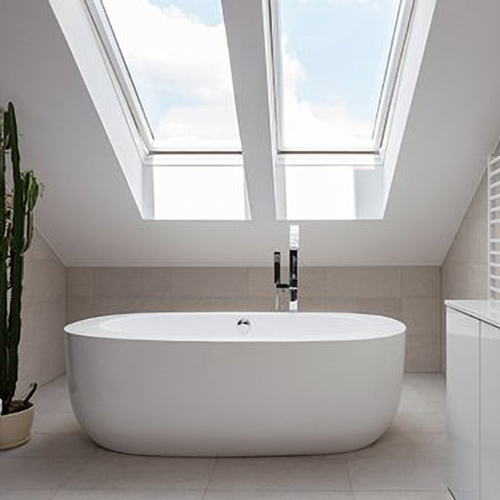
Our rooflight experts share their advice on why triple glazing is the best option for your rooflights
Triple glazed windows consist of three panes of glass within a sealed frame. They’re most popular in colder areas of Europe, but triple glazing is growing in popularity in the UK, and are the perfect option for rooflights, providing insulation, temperature control and security. Read on for our top tips on why you should consider triple glazed windows for your rooflights.
Insulation
Like double glazing, triple glazing will help to keep heat in and the thicker the glass, the better the insulation. Triple glazing has half the U-value of double glazing, which is used to measure insulation, making it extremely effective at keeping you warm.
Overheating
Whilst you may want to upgrade on your insulation in the colder months, there’s always the concern that this will turn your home into a greenhouse come summer. However, triple glazing actually protects against overheating, as solar gains in the glass reduce the heat drastically. Triple glazing can be up to two times more efficient than double glazing for keeping the heat out when it’s hot outside.
Condensation
Condensation is a problem on any window with a significant contrast in temperature either side of the pane. This can start to affect window frames, but with triple glazing, you have no need to worry, as the thickness of the layers will greatly reduce the risk of dramatic temperature contrasts.
Security
Triple glazed windows are considerably heavier than double glazed ones. This can be an issue with older buildings, but it does offer more security for your home, as thicker windows are harder to break and can deter potential thieves.
All our rooflights only have a U-value of 0.83, putting them well within the acceptable allowance for thermal efficiency under Building Regulations. Browse our rooflights today!
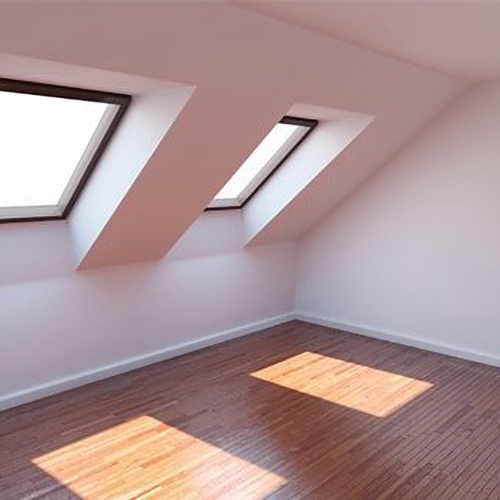
You will not usually require planning permission to install rooflights in your property, as long they remain within certain parameters and legal guidelines. We illuminate current regulations regarding rooflights and where you stand.
When will you require planning permission when installing rooflights?
In most cases, rooflights are considered an aesthetic change that sits firmly within your permitted development rights. However, this is only valid if they abide by the following:
- The rooflights cannot protrude more than 150 millimetres from the plane of the roof.
- No rooflights are allowed to be higher than the highest part of the roof.
- If the glass is side-facing, obscure-glazed glass is necessary.
- If the rooflight can open, it must be 1.7m above floor level.
If you stick within all of the above regulations, then it is unlikely that you will require planning permission for your new rooflights. However, there are certain situations which may affect this, including an Article 4.
Article 4s are issued by local councils, usually for buildings they deem to have historical or architectural importance, which place added restrictions on what changes you are allowed to make to your property without planning permission. We therefore recommend that you double check with your local council before installing rooflights; if you are located within a Conservation Area, your permitted development rights may also be different, so make sure that you double check your property’s status before proceeding.
Building Regulations
Whilst planning permission isn’t often necessary for rooflight installation, you will usually have to seek approval under Building Regulations. This is to ensure that the installation of a rooflight doesn’t compromise the integrity of the roof and cause a health and safety hazard, for example, if the rooflight is too heavy. The thermal performance of the new rooflight is also a factor.
Regulations require that any new additions to your building are suitably heat efficient and don’t exceed the highest U-value allowance.
All our rooflights only have a U-value of 0.83, putting them well within the acceptable allowance for thermal efficiency under Building Regulations. Browse our rooflights today!